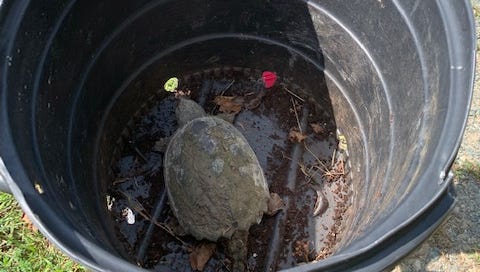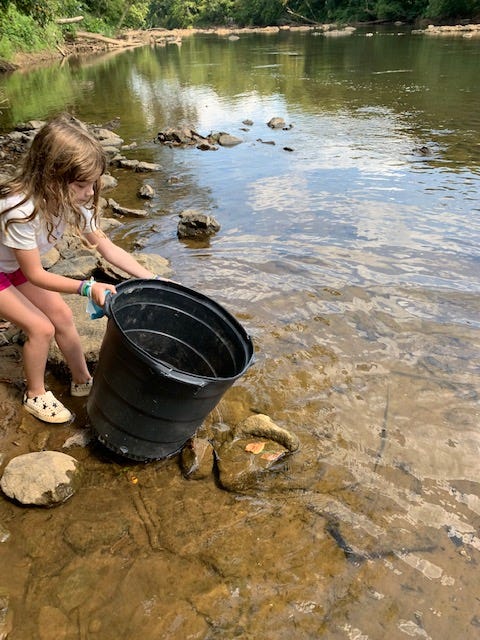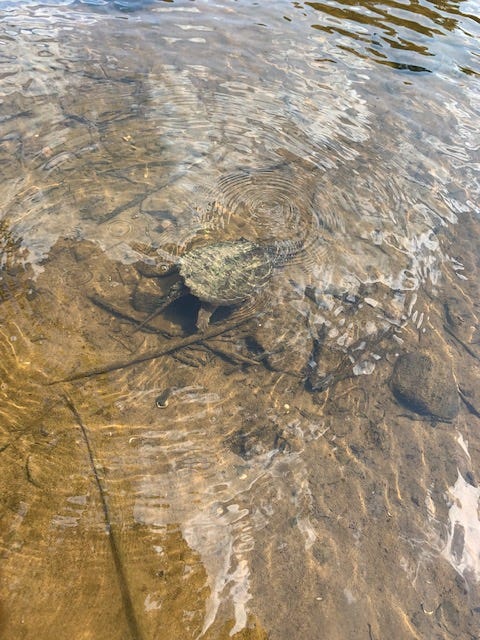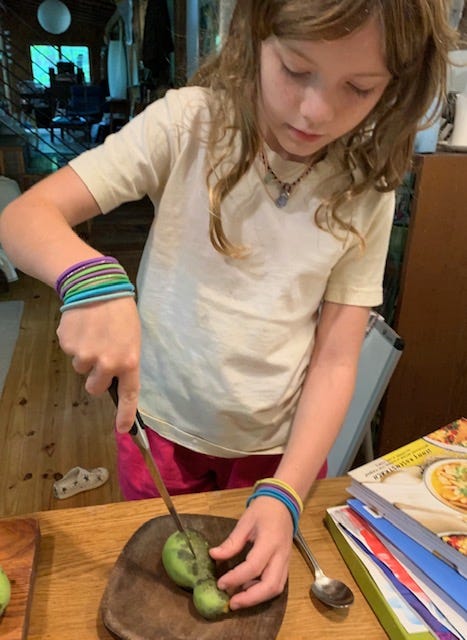On Sunday we were at Get Rooted nursery to get some more plants and we noticed something (note from Belle: we love this nursery & their shade & woods-tolerant plant advice and selection!). There was a dog barking at a big black bucket. I thought, “Hmm, wonder what that is?” and I went over and looked inside. I saw a muddy turtle with a big jaw staring up at us. It was a snapping turtle! Chad, the owner of the nursery, told us that his dog found the snapper crawling on the ground.
Since snappers need fresh water to live in, and his pond is small and he didn’t want it there, and he definitely didn’t want it to get hit by a car, Chad said he was going to take the turtle to the Haw. He knows we live by the Haw and told us we could take it if we wanted. We said sure!
While we drove, the turtle kept scrabbling around and trying to climb out of the bucket. Lucky for us, turtles are not good climbers (don’t enter American Ninja Warrior, turtles!), because my mom said if the turtle got out we were going to have to abandon the car. When we got to the kayak put-in we carefully lifted the bucket out of the back of the car. We carried it to the river and climbed down the banks.
Finally, I let the turtle go! I tipped the bucket into the river.
Snappers are really good swimmers (this one could enter American Turtle Swimming Race!), and he looked happy to be in his new home. We think it was a male because he had a long, fat tail). Adult snappers can weigh 45 pounds, which is about the same as me (alligator snappers, which look like dinosaurs, can weigh much more!).
Before we left, we picked a few ripe pawpaws! We took them home, washed our hands, and cut into them. They tasted a little bitter, and also a little sweet and mango-y. You can eat them with a spoon.
Did you know?
Common snappers can hold their breath for 30 minutes, Alligator snappers can hold their breath for 50 minutes! Sleeping turtles or resting turtles can stay under water for four or five hours.
Snappers are omnivorous and an important part of the food chain. Like bald eagles, they are top-level predators and they also serve as scavengers, cleaning up the messes of other animals and plants.
If you see a snapper and want to help it, the best thing to do is let it bite down on a stick and then lead it. If you can get it into a bucket like the one we had, that’s good too. Also make sure you have an adult with you and don’t go in the road.
If you try to pick it up it might bite you! Grampa says that his granny told him that if a snapper bites you, it won’t let go until it thunders. (Do you believe that?)
From Belle: Thanks for letting us help with your turtle, Chad! We hope it has a good life.
Stay tuned for a post about tree health on Friday! Have you rescued or found new homes for any animals lately?









love these photos of Bea and the snapper!!! so good!